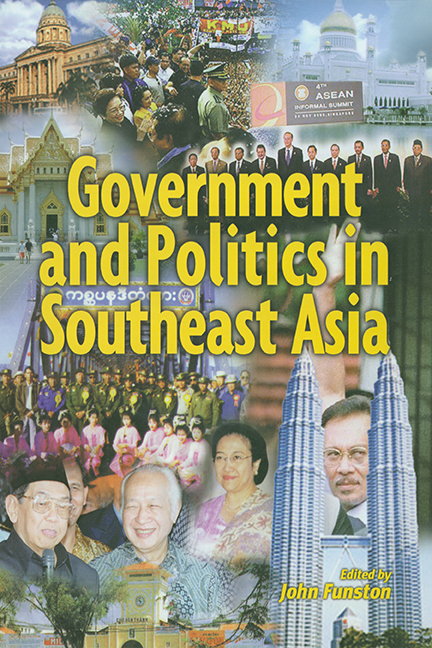2 - CAMBODIA
After the Killing Fields
Published online by Cambridge University Press: 21 October 2015
Summary
INTRODUCTION
Cambodia is one of the oldest states in Southeast Asia, but longevity has not provided a shield against political turmoil. The Khmer Rouge government gained international notoriety in the 1970s, turning the whole country into killing fields, and subsequent governments have found it hard to escape this legacy.
From the ninth to the thirteenth centuries Cambodia's Angkor dynasty ruled over much of the Southeast Asia mainland. It left historical remains that are among the wonders of the world, and evidence of a highly developed civilization. From the fourteenth century Cambodia began to contract, squeezed by Thailand on one side and Vietnam on the other. France made it a protectorate in 1863, and the state assumed its present form after Battambang and Siem Riep were wrested from Thailand in 1904 and 1907. Apart from a brief Japanese interlude during World War II, it remained a French colony until independence in 1953.
Cambodia shares long and often contested borders with Laos (in the north), Thailand (in the west), and Vietnam (in the east). It remains a predominantly agrarian society, with 75 to 80 per cent of the population earning their living from agriculture. Forests are among the country's most important natural resources, but have been depleted rapidly (often illegally) since the mid-1990s. Despite being resource-rich, Cambodia remains poor. This is largely the legacy of the civil war in the first half of the 1970s and the Khmer Rouge reign of terror. In the early 1980s, a socialist government started to rebuild the economy from scratch. Faced with economic stagnation, the government moved to adopt a policy of liberalization late in the decade.
- Type
- Chapter
- Information
- Government and Politics in Southeast Asia , pp. 36 - 73Publisher: ISEAS–Yusof Ishak InstitutePrint publication year: 2001



